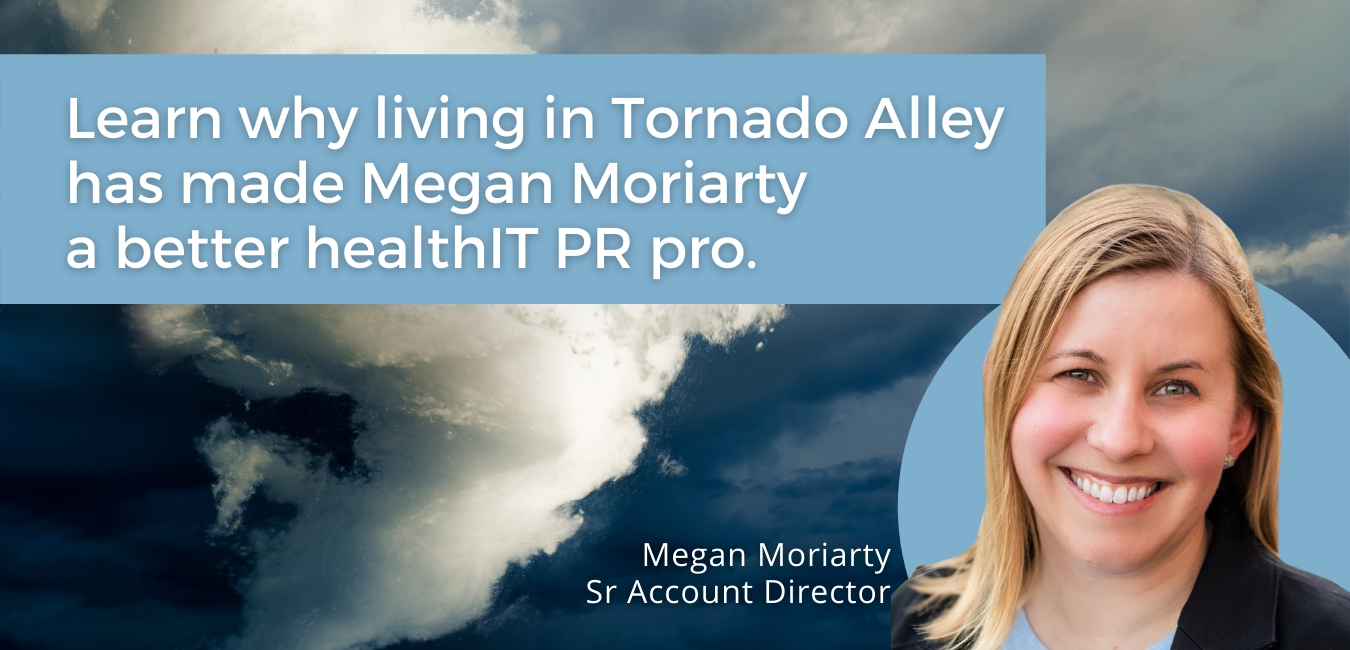Most people working in communications are familiar with the idea that storytelling creates the most impactful and memorable messages. Feeling a human connection to a story is what makes it resonate with us, and what makes us care. Working in the healthcare communications field makes it easy to tell great stories because we’ve all had our own healthcare experiences. Healthcare is personal and we can relate to any number of situations because of that.
When pitching/covering/writing about health IT, it’s important to center around the human element. Amendola CEO Jodi Amendola has shared that the best PR is personal, and the human connection is what makes any story relatable. My colleague Margaret Kelly also recently wrote about her perspective on health IT as a patient. Connecting the features of health tech to end users (physicians and other care providers) and to the ultimate benefits to patients makes stories more powerful and demonstrates the value of technology.
In the health IT world, there’s so much innovation and so many new tools, programs and systems that can improve the healthcare system. But the most important stories in health IT are not about the technology but instead about the patients who ultimately benefit from the technology. Patients are the ultimate beneficiary of all the innovation happening in healthcare, from safety, to efficiency, to patient satisfaction and ultimately improved health outcomes.
If, like me, you’ve had a telemedicine appointment this year because of COVID-19, you’ve experienced health tech innovation firsthand. While telehealth was not initially conceived as a method for delivering health care to prevent viral spread during a pandemic, it’s an unexpected use case for an innovation that was originally thought of as a convenience. The rapid adoption of telemedicine during the COVID-19 pandemic has likely changed health care delivery, and telemedicine is likely here to stay in a bigger role moving forward.
I can look at my own career in PR and see real-world examples of how healthcare technology benefitted physicians and patients in unexpected ways. I live in the Kansas, which is right in the heart of “Tornado Alley.” No, I’ve never actually seen a tornado, but the sirens are a familiar part of spring and summer in the Midwest. Tornados are destructive and can be deadly – you may remember the horrific destruction of the EF-5 tornado in Joplin, Missouri in 2011 which killed 161 people and badly damaged the local hospital.
Even though there were reports of X-ray films being blown 70 miles away, patient records were also digitized. When the hospital was closed due to the extensive damage, the community set up temporary facilities to care for patients and the clinicians were able to electronically access medical records for those patients. Prior to the widespread adoption of electronic health records, this would not have been possible.
I was also working in health IT when a devastating tornado ripped through a medical center in Oklahoma in 2013. The roof was torn off and the medical center had to evacuate patients to other locations within the regional health system. Before EHRs, this situation would have left clinicians without access to the health records for the patients in their care. But thanks to the digitization of medical records and a regional health information organization (RHIO) for which my employer remotely hosted the records, patients could be transferred to other nearby facilities and physicians could access patients’ records for treatment.
This second example was actually a cover story in Modern Healthcare that highlighted how technology makes our healthcare system better and benefits communities and patients. It may have been an unintended use case for health information exchanges (HIEs) and remotely hosted records for disaster preparedness, but sometimes unforeseen events help to prove the efficiency and value of certain innovations.
Finding a meaningful way to communicate how innovations benefit people makes health IT messages more memorable. To make your health tech story resonant with audiences, always look for the human connection.
